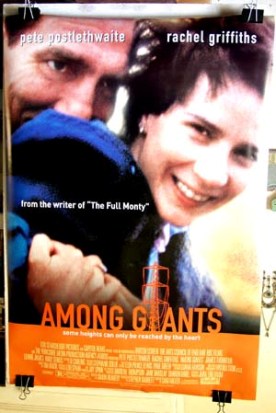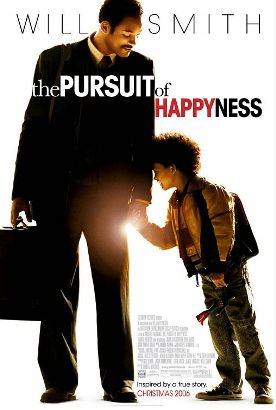Among Giants
You sure can tell that Among Giants was written by Simon Beaufoy (it was directed by Sam Miller), last heard from as the screenwriter of The Full Monty. Like Monty, this movie is set in (or near) Sheffield in Yorkshire and is an exercise in nostalgia and sentimentality of a peculiarly English—especially a northern English—type. That is, it is not merely a longing for the good old days. That might be perceived as conservatism. Instead, it is an attempt to bring the good old days to some kind of accommodation with the pop culture of the 1960s and afterwards and with a more general political correctness acceptable to the advanced consciousness of the 1990s. In both films, tradition is represented by young male working class culture whose decline is made all the more poignant by the death of the heavy industry that so long sustained it. Now the lads engage in sport and other idle pastimes—especially drinking, joking and chasing women and, occasionally, fighting—but their work is occasional and off-the-books.
The work in Among Giants is painting electricity pylons on the Yorkshire moors. That not only is this being done unofficially but also, unless they finish by the deadline, that the electricity will be turned back on and fry them all is a pretty far-fetched dramatic premiss. But the principal concern of Messrs Beaufoy and Miller is to ask, and possibly to answer, that burning question among the Yorkshire lads: can a lass be a mate? The lass in question here is an Australian free spirit called Gerry (Rachel Griffiths) who attracts the attention of Ray (Pete Postlethwaite) and Stevie (James Thornton) by being, like them, a rock climber. When she finds out that Ray and Stevie are engaged in dangerous work at the head of a gang of drunks and misfits (who, in real life, would doubtless kill themselves if they had to climb an electricity pylon), she asks to join. To everyone’s surprise, Ray says yes.
Ray is a divorced father—in Mr Beaufoy’s world, the perverse romance of divorced and absent fatherhood is what the perverse romance of single motherhood is in American culture—who lives for his pals and fellow-workingmen, but he soon falls in love with Gerry. More surprisingly, as she cannot be much more than about half his age, she falls in love with him. The tension thus created with Stevie (who is more like a son to him than his own children) and the others, as Ray’s and Gerry’s sexual relationship attempts to take its place on an equal footing with the male friendships, is briefly interesting. I also think the film comes in the end to the right conclusion on the subject. And as an added bonus we get to see the lovely and charming Miss Griffiths in the nude, if we are prepared to sit through the spectacle of the not-so-lovely or charming Mr. Postlethwaite in the ditto. But the movie’s treacly sentimentality and its improbable narrative tension, based as it is on British urban cowboys who paint pylons for cash, make it too silly to be worth seeing.
Discover more from James Bowman
Subscribe to get the latest posts to your email.








